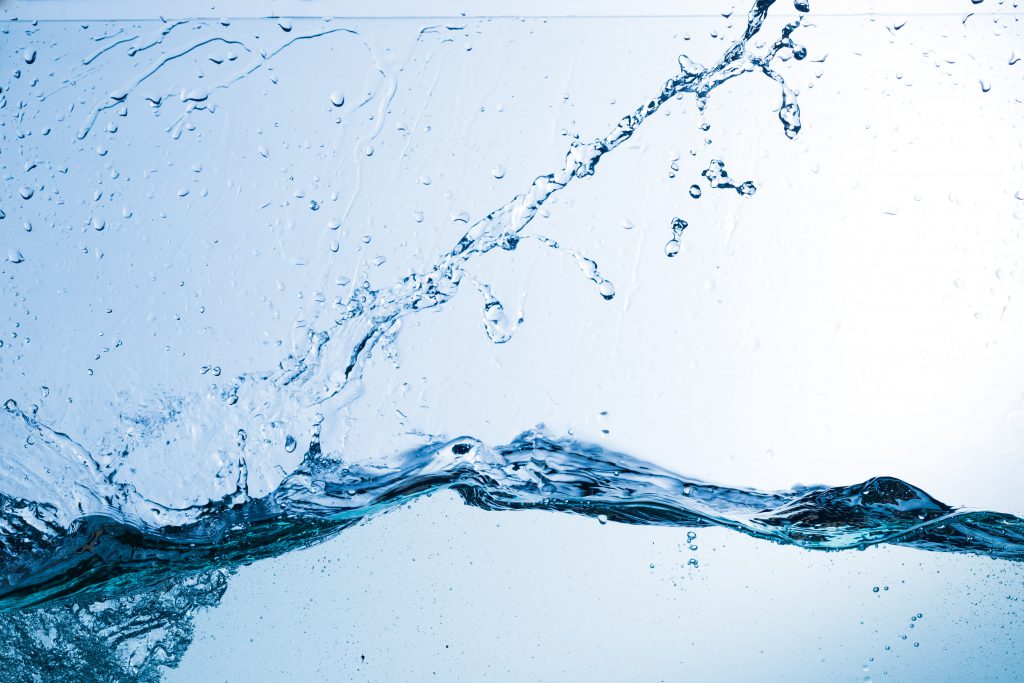TECHNOLOGY
What Exactly IS Refex?
REFEX reference junctions are manufactured from an electrochemically conductive, salt loaded, polymeric matrix. When installed in an electrode, there is no porous junction to allow liquid contact between process fluids and the internal (sealed for life) Ag/AgCl reference half-cell. REFEX provides a stable mV output for measurement and ensures that process fluids do not poison or deplete reference cell electrode or electrolyte.
REFEX continues to perform even when completely coated as long as the coating remains wet and is conductive. Even when severe coating of the sensor inevitably slows electrode response, pH measurement remains accurate. Proven applications range from clean, cold river water to crude oil, sewage sludge and nasty chemical streams – all are solved with a REFEX reference interface.
The REFEX electrode is the reliable sensor the market has been waiting for – almost maintenance free with exceptionally long life and superb stability.

The Benefits of REFEX Technology
Refex pH reference electrodes are constructed from an advanced polymeric material that provides an electrochemical connection to the reference electrode within the probe without any direct process fluid contact. This eliminates the problems of measurement stability and reduced probe life seen in traditional probes. The construction method of Refex sensors utilizes a large section of the electrode body to provide the reference connection, massively reducing measurement error introduced by material in the process coating the outside of the probe. Refex pH and ORP sensors are reliable, accurate, stable, and give exceptionally long life (even in harsh petrochemical applications, probes can be expected to last 5 times longer than conventional designs) providing real savings in maintenance costs while dramatically increasing process quality.
Probes with non-porous REFEX ™ references have these very real benefits:
Operational
- Measurement is accurate, repeatable and above all, reliable
- Confidence in meeting statutory / regulatory measurement requirements
- Low maintenance saves manpower – no need to calibrate every week!
- Maximize plant throughput by dramatically reducing down-time
- Long life – fewer sensor changes means real cost savings
Technical
- They are virtually maintenance free
- Give exceptionally long sensor life (>5 times longer than standard probes)
- Have large surface contact area
- Work in vacuum without electrolyte reservoirs and up to 300psi pressure
- Do not leak electrolyte into the process (good in low-ionic & UPW applications)
- Do not become clogged (good where precipitates are present)
- Do not become poisoned (good in H2S and chemical process applications)
- Much faster response times
- Greater accuracy & repeatability
Commercial
- Reduced cost of ownership from greater reliability & reduced maintenance
- Improve process quality control through reliable measurement
- Fast response provides real savings by preventing chemical over-dosing
REFEX Technology Overview
Major pH measurement problems such as drift, sluggish response and measurement error are often associated with the porous reference junction or conductive salt bridge of conventional electrodes. Being porous, the reference junction is very sensitive to fouling, poisoning, temperature/pressure changes, and diffusion/dilution of the electrolyte within the reference half-cell and all these factors can have a significant impact on the measurement performance. Short operating life of conventional electrodes in aggressive applications is often experienced and besides the cost of replacement electrodes, many man hours are expended in maintenance activities. The cost of using conventional electrodes, even so called “long-life” and “rugged application” designs, is high and an area o great opportunity for cost reduction.
REFEX electrodes still rely upon an Ag/AgCl element in a 3 mol/l KCl electrolyte (just like conventional technology probes, so they work with many standard pH transmitters) but in addition use a patented conductive polymeric material as a barrier between the process and the reference electrode. Unlike conventional electrodes that use open channels, diaphragms or other means to connect the reference electrode to the process, this solid barrier is non-porous, so the problems caused by to fouling, poisoning, temperature/pressure changes, and diffusion/dilution of the electrolyte are essentially mitigated.
Simply put, REFEX reference electrodes improve on conventional designs by eliminating the need to have a porous liquid junction in a pH (or ORP) measurement circuit.
The non-porous nature of REFEX:
1. Eliminates diffusion potential errors
As an example, raw water (Reservoir, Lake, and River) can be bitterly cold with low ionic strength and trace quantities of magnesium and iron. Conventional pH sensors with porous reference junctions can quickly foul because of the trace metals and require frequent cleaning and recalibration. Because of the difference in salt concentration between the reference electrolyte (typically KCl 3 mol/l) and the water being measured, diffusion occurs through the porous junction and the reference cell electrolyte becomes depleted. This causes a diffusion potential error – which is significant when a tight pH value has to be maintained. When conventional electrodes with porous junctions are installed in low ionic strength water applications, they often exhibit instability in the form of continuous drift.
The opposite is true when working with process solutions with high ionic strength. Here, diffusion occurs in the opposite direction with a consequent change to the electrolyte properties.
REFEX, being non-porous, has eliminated measurement error caused by diffusion potential. There is no electrolyte loss or dilution while the electrode is in service and this provides an extremely stable reference output (drift < 1mV/month). Ingress of poisoning material is eliminated, greatly extending electrode life.


2. Is resistant to fouling and coating
Electrode fouling is one of the major problems requiring frequent electrode maintenance and recalibration. The problem in conventional electrodes is the porous liquid-junction for the reference electrode. This porous junction, whether ceramic, Teflon, paper, even wood and other materials can, over time become clogged by process medium, increasing impedance and effecting performance. This clogging can become can become so bad that the electrode stops responding at all. Lime scale, manganese, precipitation between hydrogen sulfides and AgCl and protein/fat build up in sewage and industrial effluents are all examples of material that can effect electrode performance in this way. Fine particle clogging – pigments and dye stuffs etc. – are particularly bad and have been known to shorten conventional electrode life considerably.
Reference electrodes are low impedance sensors (typically 10 kΩ) while the pH glass element is a high impedance sensor (typically 100 MΩ). Coating and deposits on sensors can increase impedance by 1 MΩ; this is not a major problem for the pH glass electrode – the impedance changes to 101 MΩ (1% increase) however this same effect on the reference side (across the porous junction) changes the impedance from 10 kΩ to 1010 kΩ – orders of magnitude of change and this is exactly where the problem lies. One solution to this problem has been to use a flowing junction electrode where liquid electrolyte is pressurized to create a positive KCl out-flow through the junction and keep it clear of contaminants. While this helps, it is maintenance and consumable intensive and still allows poisoning of the reference element with resultant precipitation within the sensor body. The pressurization and flow of the electrolyte then seals the electrodes’ fate by blocking the junction from the inside!
REFEX is far more resilient to fouling and build up. Being non-porous, there is nothing to block and provided any coating on the electrode is conductive, it will continue to operate as if clean. Note that eventually, it will be necessary to clean off heavy build-up from the electrode – it is difficult to measure the process with the electrode buried in its own “micro-environment” of build-up.
3. Responds instantaneously to pH change
The REFEX solid state polymeric reference system allows sensors to respond instantaneously to pH change. This is a very important quality when titration and chemical dosing is required. The entire outside wetted surface of the REFEX reference electrode is electrochemically active without diffusion potential / flow errors and ensures rapid response to pH change, preventing dosing over-shoot and the unnecessary wastage of expensive dosing chemicals. This response characteristic can result in significant cost reduction through chemical savings.
Conventional electrodes respond far more slowly due to ion diffusion time through the porous junction. The use of tortuous paths and double junction techniques to extend electrode life only adds to the slowing of response, and as the porous junctions become obstructed, response time slows further. Slow response inevitably results in set point overshoot and the unnecessary wastage of expensive dosing chemicals.

